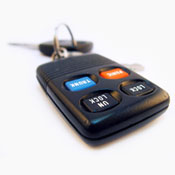10 Guaranteed Tips to Lower Auto Insurance Costs in Janesville

Paying for high-priced auto insurance can drain your savings account and force you to prioritize other expenses. Doing a price comparison is free, only takes a few minutes, and is a good way to reduce premiums and put more money in your pocket.
There are many insurers to pick from, and although it’s nice to have a choice, it can be more challenging to find the lowest cost provider.
Do you qualify for a discount?
Companies don’t necessarily list all available discounts in a way that’s easy to find, so we break down some of the best known and also the lesser-known ways to save on auto insurance.
- Low Mileage – Keeping the miles down can earn a substantially lower rate.
- Senior Discount – If you qualify as a senior citizen, you may qualify for reduced rates.
- Seat Belts Save – Buckling up and requiring all passengers to buckle their seat belts could cut 10% or more on the medical payments or PIP coverage costs.
- Good Students Pay Less – This discount can save 20 to 25%. The discount lasts up to age 25.
- Discount for New Cars – Adding a new car to your policy is cheaper due to better safety requirements for new cars.
- Multiple Policy Discount – When you combine your home and auto insurance with the same company you may earn at least 10% off all policies.
- Accident Waiver – A few companies allow you one accident without raising rates if your claims history is clear for a certain period of time.
- Passive Restraints – Cars that have air bags and/or automatic seat belt systems can receive discounts of more than 20%.
- Resident Student – Any of your kids who attend school more than 100 miles from home and do not have access to a covered vehicle may qualify for this discount.
- Federal Government Employee – Active or retired federal employment may qualify you for a discount with a few auto insurance companies.
It’s important to note that most discounts do not apply to the entire policy premium. Most cut the price of certain insurance coverages like medical payments or collision. So despite the fact that it appears adding up those discounts means a free policy, companies don’t profit that way.
How can 21st Century, Allstate and State Farm save drivers who switch?
Auto insurance companies such as 21st Century, Allstate and State Farm consistently run television and radio advertisements. They all seem to say the same thing about savings if you change your coverage to them. How can each company make almost identical claims? This is how they do it.
All the different companies can use profiling for the type of driver they prefer to insure. A good example of a profitable customer might be between the ages of 30 and 50, has no prior claims, and chooses high deductibles. A customer getting a price quote who fits that profile will get very good rates and therefore will save when switching.
Potential insureds who don’t qualify for these standards must pay more money and ends up with the driver buying from a lower-cost company. The ads say “people who switch” not “people who quote” save that much money. That’s why companies can advertise the way they do. This illustrates why it is so important to get a wide range of price quotes. It is impossible to predict which auto insurance company will fit your personal profile best.
What coverages do I need?
When choosing proper insurance coverage for your vehicles, there isn’t really a best way to insure your cars. Every situation is different and your policy should reflect that. These are some specific questions may help you determine if your insurance needs may require specific advice.
- Should I drop comprehensive coverage on older vehicles?
- Can I get a multi-policy discount for packaging my home and auto coverage?
- Is my babysitter covered when using my vehicle?
- What is the minimum liability in Wisconsin?
- What vehicles should carry emergency assistance coverage?
- Are split liability limits better than a combined single limit?
- Is business equipment covered while in my vehicle?
- What can I do if my company denied a claim?
If you don’t know the answers to these questions then you might want to talk to a licensed agent. If you don’t have a local agent, take a second and complete this form or you can also visit this page to select a carrier
Auto insurance coverage information
Learning about specific coverages of a auto insurance policy helps when choosing appropriate coverage for your vehicles. The coverage terms in a policy can be ambiguous and even agents have difficulty translating policy wording. Shown next are the usual coverages found on the average auto insurance policy.
Comprehensive coverage (or Other than Collision)
This coverage pays for damage that is not covered by collision coverage. You first have to pay a deductible and then insurance will cover the rest of the damage.
Comprehensive insurance covers claims like theft, damage from getting keyed, hitting a deer, a tree branch falling on your vehicle and hitting a bird. The maximum amount a auto insurance company will pay at claim time is the cash value of the vehicle, so if the vehicle’s value is low consider dropping full coverage.
Uninsured Motorist or Underinsured Motorist insurance
Your UM/UIM coverage provides protection when other motorists either are underinsured or have no liability coverage at all. It can pay for injuries sustained by your vehicle’s occupants as well as your vehicle’s damage.
Since many Wisconsin drivers carry very low liability coverage limits (50/100/55), it doesn’t take a major accident to exceed their coverage limits. For this reason, having high UM/UIM coverages should not be overlooked.
Liability car insurance
Liability insurance provides protection from damage that occurs to a person or their property that is your fault. It protects YOU against claims from other people. It does not cover damage sustained by your vehicle in an accident.
Coverage consists of three different limits, per person bodily injury, per accident bodily injury, and a property damage limit. You might see limits of 100/300/100 which means $100,000 bodily injury coverage, a limit of $300,000 in injury protection per accident, and property damage coverage for $100,000.
Liability can pay for things like legal defense fees, repair bills for other people’s vehicles, funeral expenses and loss of income. How much liability coverage do you need? That is up to you, but buy as much as you can afford. Wisconsin requires drivers to carry at least 50,000/100,000/55,000 but you should think about purchasing more liability than the minimum.
Collision protection
Collision coverage covers damage to your vehicle from colliding with an object or car. You will need to pay your deductible and then insurance will cover the remainder.
Collision can pay for claims like damaging your car on a curb, hitting a mailbox, driving through your garage door and sideswiping another vehicle. Paying for collision coverage can be pricey, so you might think about dropping it from lower value vehicles. It’s also possible to bump up the deductible to get cheaper collision coverage.
Insurance for medical payments
Personal Injury Protection (PIP) and medical payments coverage kick in for bills for things like X-ray expenses, chiropractic care, EMT expenses, rehabilitation expenses and ambulance fees. They can be utilized in addition to your health insurance policy or if there is no health insurance coverage. Medical payments and PIP cover both the driver and occupants and will also cover being hit by a car walking across the street. PIP coverage is only offered in select states and may carry a deductible
More resources for learning
Additional detailed information is located at the Wisconsin Office of the Commissioner of Insurance website. Wisconsin consumers can find disaster information, file complaints about a company, and find out industry alerts.
Other informative sites include BankRate.com’s Car Insurance: When not to Skimp and this link which helps you find a Janesville agent.
Better coverage you can count on
In this article, we presented some good ideas how you can shop for auto insurance online. The key thing to remember is the more providers you compare, the more likely it is that you will get a better rate. You may even find the lowest priced auto insurance comes from a lesser-known regional company. Regional companies may have significantly lower rates on certain market segments compared to the large companies like Allstate, GEICO and Progressive.
When buying insurance coverage, make sure you don’t reduce needed coverages to save money. There are a lot of situations where drivers have reduced physical damage coverage only to regret at claim time that the few dollars in savings costed them thousands. The aim is to purchase a proper amount of coverage at a price you can afford while not skimping on critical coverages.

